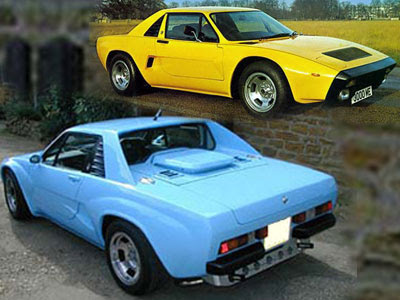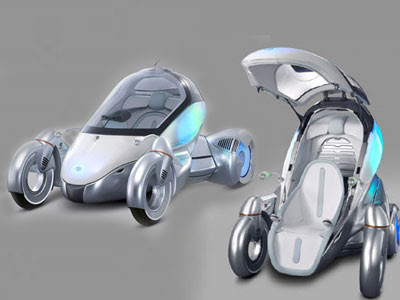
A fuel cell produces electricity directly from
the reaction of hydrogen and oxygen. The only byproduct is water. A fuel-cell vehicle utilizes the electricity produced by the fuel cell to power motors at the vehicle's wheels. Fuel-cell vehicles are similar to battery-electric vehicles in that they are powered by electricity, but they do not have to be recharged like battery vehicles. Fuel-cell vehicles have onboard storage tanks that could be filled at hydrogen filling stations, similar to gasoline vehicle refueling.
What Are the Pros and Cons?Air pollution. Vehicles that run on pure hydrogen are true zero-emission vehicles. Some vehicle manufactures, however, are developing fuel-cell vehicles that can run on hydrocarbons, such as methanol (a liquid fuel derived most commonly from natural gas) or gasoline. Using hydrocarbons to operate fuel-cell vehicles would result in tailpipe air pollutant emissions, reducing fuel cells' overall environmental benefits.
Global-warming pollution. Run on pure hydrogen, fuel cells consume no fossil fuels and emit no heat-trapping gases (which contribute to global warming). However, it is extremely important to factor in any global warming emissions associated with the production of hydrogen. Pure hydrogen gas does not occur in nature in concentrated amounts, meaning that hydrogen must be produced. A number of various technologies exist to extract hydrogen from sources such as water, natural gas, coal, and biomass, among others. The different hydrogen sources and production methods determine the amount of heat-trapping gases and other environmental issues associated with hydrogen production. Advances in hydrogen production are needed to minimize and eliminate global warming emissions. Research needs to continue on producing hydrogen from renewable resources, including wind and solar power and more advanced technologies.
Cost. Today's fuel-cell vehicles are mostly produced as prototypes or in very small quantities. As mass production often correllates to cost competitiveness, current costs are quite high. But the interest of automakers worldwide in developing these vehicles signals their belief that fuel cells will be competitive with conventional-technology vehicles. Increasing experience with advanced hybrid-electric vehicle technology and production will help lower the cost of future fuel-cell vehicles. Hybrid-electric vehicles use electric motors and advanced battery technology, both of which will be beneficial in fuel-cell vehicle development.
Performance and range. As with other electric-drive vehicles, fuel-cell cars are quiet, smooth, and fun to drive. A remaining challenge for fuel-cell vehicle developers is storing hydrogen onboard the vehicle. Because hydrogen is a gas, as opposed to a liquid fuel, a larger volume of it is needed to travel the same distance as with a tank of gasoline. A number of hydrogen storage technologies are being pursued to provide fuel-cell vehicles with a driving range equivalent to today's cars.

Market Availability. Fuel cells have moved remarkably quickly from laboratory to road. Fuel-cell transit bus demonstration projects were completed in both Chicago and Vancouver, and similar demonstrations are occurring in various cities boty nationwide and around the globe. In California, automakers, fuel companies, and government agencies are working in partnership to test fuel-cell vehicle technology and are expected to produce more than 60 demonstration vehicles over the next few years. Also, the California ZEV (Zero Emission Vehicle) Program will require auto manufacturers to sell increasing numbers of zero- emission vehicles over the next decade, further encouraging the development of fuel-cell vehicles. Still, a number of durability, performance, and cost issues must be overcome before fuel-cell vehicles are ready for mass production. Most of the major automakers have stated their intention to begin selling fuel-cell passenger vehicles by the end of the decade.
















